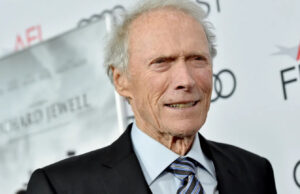
Tony Hawk, a name synonymous with skateboarding, achieved unprecedented success at a remarkably young age. By the age of 14, he was not only a professional skateboarder but also one of the highest-earning kids in the world. Pulling in an astounding $160,000 per year before he was even old enough to drive, Hawk experienced financial freedom that most teenagers could only dream of. However, with great fortune came challenges, and his journey through financial ups and downs provides valuable insights into money management, the importance of foresight, and the wisdom gained from experience.
In a recent appearance on the “Richer Lives by SoFi” podcast, Hawk reflected on his youthful financial decisions and the valuable lessons he learned through both triumph and hardship. His story serves as an inspiring tale for anyone seeking to understand the significance of financial responsibility, investments, and the need to prepare for an uncertain future.
The Rise of a Teenage Skateboarding Star
Hawk’s meteoric rise in the 1980s coincided with the explosion of skateboarding culture. His incredible skill set him apart from his peers, and endorsements poured in, making him one of the highest-paid athletes in the industry. At just 14 years old, he found himself in a position where he was earning more money than most adults.
With his newfound wealth, Hawk initially believed he had “all the money in the world,” a sentiment that many young athletes and entertainers can relate to. The allure of financial freedom at such a young age can be overwhelming, and without the right guidance, it often leads to impulsive decisions and unchecked spending.
Living Large: Hawk’s Lavish Spending Habits
Despite his father’s cautionary advice that his financial success might not last forever, Hawk admits that he lacked the perspective and maturity to manage his wealth wisely. As a teenager, with money flowing consistently, it was difficult to envision an end to the lavish lifestyle he had become accustomed to.
Some of Hawk’s extravagant spending habits included:
•Lavish Trips: He frequently took his friends on all-expenses-paid vacations to destinations like Hawaii, covering travel, accommodations, and entertainment.
•Impulse Purchases: Hawk recalls indulging in shopping sprees at Sharper Image, buying the latest and most expensive electronics on a whim.
•Unnecessary Luxuries: One of his most regrettable purchases was a tanning bed, a particularly ironic acquisition given that he lived in sunny Southern California. In hindsight, Hawk laughed at the absurdity of this buy.
While these expenditures may have seemed inconsequential at the time, they quickly added up, and Hawk soon realized that money, no matter how abundant, could run out.
A Smart Investment at 17: The Turning Point
Despite his youthful spending spree, Hawk’s father played a crucial role in guiding him toward a more responsible financial future. During his senior year of high school, when he was still earning substantial income, his father advised him to invest in real estate.
Hawk, however, viewed the advice differently. Instead of seeing it as a long-term financial strategy, he saw an opportunity to own a house where he could host his friends and enjoy his independence. At the tender age of 17, with his father cosigning the purchase, he bought his first property, a decision that would later prove to be his saving grace.
The property initially served as a social hub, but it would eventually become a financial lifeline when Hawk’s income declined, and his financial situation became precarious.
The Reality Check: Financial Struggles and a $5-a-Day Budget
As Hawk’s career progressed into the early 1990s, the popularity of skateboarding waned, and so did his income. The once-thriving financial resources began to dwindle, and Hawk found himself struggling to keep up with payments on his dream home, a luxurious property complete with a massive skate ramp.
To cope with the financial downturn, Hawk imposed a strict $5-a-day food budget, surviving on affordable staples such as:
•Taco Bell meals
•Ramen noodles
•Peanut butter sandwiches
This period was a stark contrast to his years of extravagance, and it forced him to rethink his approach to money management. The struggles served as a wake-up call, reinforcing the importance of financial discipline and prudent decision-making.
A Return to Stability: Moving Back to His First Home
With financial pressures mounting and a child on the way, Hawk made the difficult decision to sell his dream home and move back into the first property he had purchased at 17. What had once been his party house transformed into a place of refuge and stability for his growing family.
This decision, though humbling, taught Hawk an invaluable lesson: making smart investments early can provide a safety net in times of need. The foresight of his father’s advice ultimately allowed him to regain his footing and reestablish financial stability.
A Second Financial Windfall: The Tony Hawk’s Pro Skater Franchise
In 1999, Hawk’s fortunes took a dramatic turn when he secured a lucrative deal with Activision for the launch of the “Tony Hawk’s Pro Skater” video game series. The franchise became a massive success, bringing in millions of dollars and revitalizing Hawk’s financial situation.
Unlike his younger self, Hawk approached this second financial windfall with a more measured perspective. He understood the importance of long-term planning, saving money, and making strategic investments to secure his future.
The success of the video game franchise allowed him to reinvest in his career, expand his brand, and establish himself as more than just a professional skateboarder—he became an entrepreneur and cultural icon.
Key Financial Lessons from Tony Hawk’s Journey
Reflecting on his journey, Hawk acknowledges that his early experiences with money taught him valuable lessons that he now applies in both his personal and professional life. Some of the most important takeaways from his story include:
Live Within Your Means
Regardless of how much you earn, it’s crucial to develop spending habits that align with your income. Hawk learned the hard way that wealth can be fleeting, and maintaining a sustainable lifestyle is essential.
Invest Wisely Early On
Hawk’s investment in real estate at a young age ultimately proved to be a lifesaver. Smart investments can provide long-term financial security, even when income fluctuates.
Avoid Impulse Spending
While it’s tempting to splurge on luxuries, it’s essential to differentiate between wants and needs. Hawk’s experience with frivolous spending taught him to be more mindful of financial priorities.
Plan for Uncertainty
Success in any field can be unpredictable. Preparing for financial downturns by saving and investing can help weather challenging times.
Seek Guidance
Having mentors or advisors, like Hawk’s father, can provide valuable financial insights and help navigate complex decisions.
A Legacy Beyond Skateboarding
Tony Hawk’s financial journey from teenage prosperity to financial hardship—and ultimately, redemption—serves as a compelling narrative of the importance of financial literacy and planning. His early spending missteps, coupled with his father’s guidance, taught him invaluable lessons that he now shares with others.
Through initiatives such as his podcast appearances and charitable endeavors, Hawk continues to inspire not just aspiring skateboarders, but individuals across various fields who seek to achieve financial stability and success.
His story is a reminder that no matter how successful one becomes, financial awareness, responsibility, and strategic planning are key to sustaining wealth and ensuring long-term security.
No comments yet.








